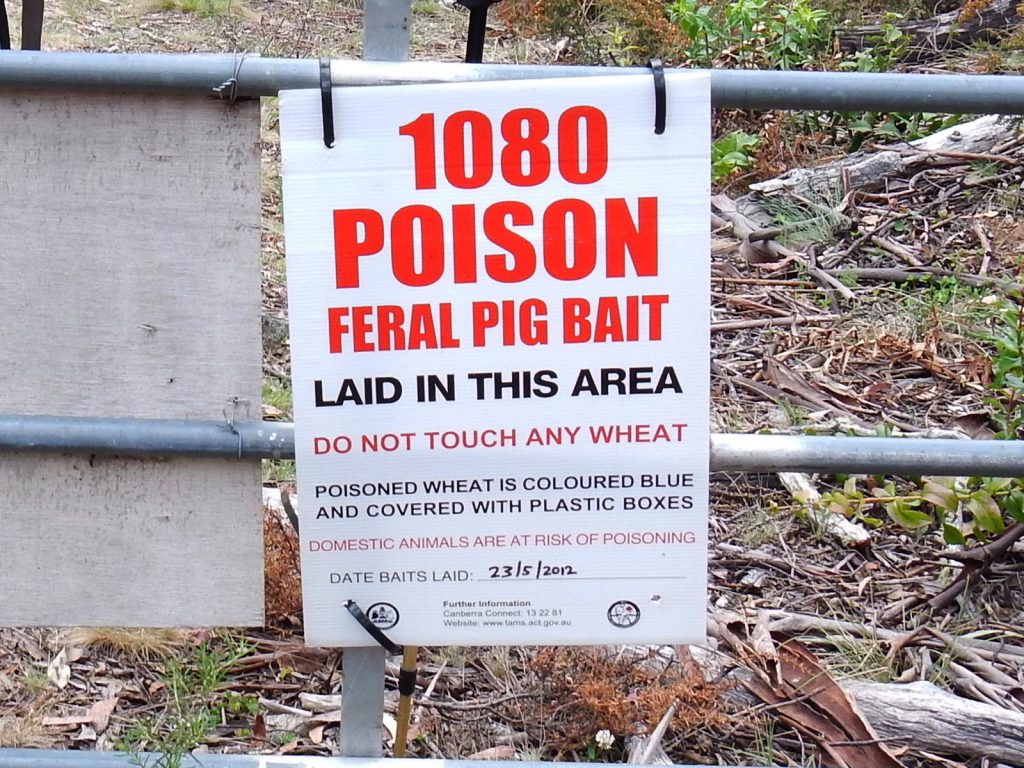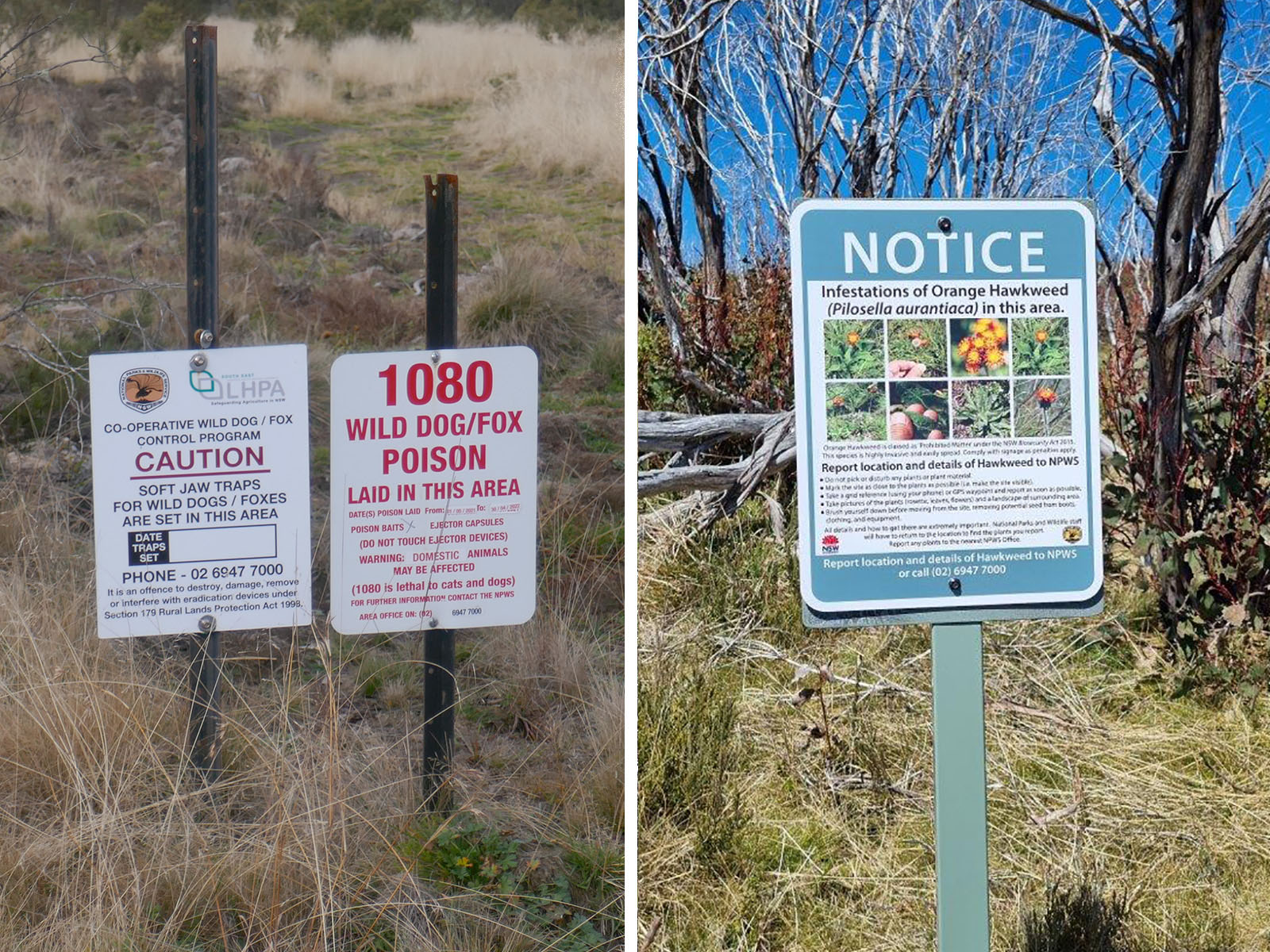Reading Time: 7 minutes
Invasive species are an animal or plant species that, as a result of human activities, has spread beyond its normal distribution. This article is a brief overview.
In the Australian environment, as a result of European settlement, invasive species have already done and continue to cause immense damage to soils, native plants and animals, threatening a unique biodiversity and reducing overall species abundance and diversity. The impact on agricultural production has also been severe.
Invasive species include:
- feral animals
- weeds
- introduced marine pests
- diseases, fungi and parasites
- insects and other invertebrates
Feral animals
The feral animals listed below are not native to Australia, so cannot be called “wild” animals. Most of these feral species had their origins as deliberately released or escaped domestic animals (dogs and cats) or agricultural livestock (horses, camels, goats, pigs), were released as a food source (water buffalo) or as game animals for hunting (deer, foxes, rabbits).
Feral animals degrade natural habitats by intensive and selective grazing, and out-competing native animals for food and habitat.
The larger animals with hard hoofs either compact or break up the soil making it difficult for native vegetation to grow and contributing significantly to erosion.
Feral animals can harbour and spread diseases that are devastating to livestock.
Introduced fish have taken over some river and lake systems. Their habits change the environment to make it no longer suitable for native fish and marine animal species.

Feral animals and the damage they cause
- Rabbits compete with native species for food and shelter, as well as changing native plant community composition and degrading land, e.g. they take over the burrows of bilbies and bandicoots. They are recognised as Australia’s most widespread and destructive environmental and agricultural pest. Their burrows and grazing habit of eating grasses down to the roots resulted in massive soil erosion that turned vast areas from productive agricultural land to desert. They are primarily found in agricultural areas.
- Foxes have had a devastating impact on Australia’s biodiversity and agriculture since their deliberate introduction for recreational hunting in the 1800s. They may occasionally be seen bushwalking, but are primarily found in agricultural and semi-urban areas.
- Feral cats have spread to most areas of Australia. These feral domestic cats are exceptional hunters and pose a significant threat to the survival of many native species including small mammals, birds and reptiles. Feral cats and foxes are a major factor in the disappearance of the numbat and mallee fowl from many areas. Generally cats keep away from humans and are rarely sighted. Feral cats have become much larger than domestic cats, and can be misidentified as a larger species such as a puma or panther.
- Feral dogs are, like cats, aggressive and skilled hunters and can threaten the local existence of native species in bush areas. In agricultural areas they attack livestock. They often hunt in packs and kill stock for its own sake. Stock that survive are terrorised. Farmers can suffer great loss due to wild dog attacks. Ground and aerial baiting, trapping and shooting are used to reduce numbers, especially in public land adjoining agricultural properties. If a wild dog is sighted it should be reported to the land management authority. Like cats, feral dogs can be larger than domestic ones.
- Feral goats are widespread across Australia. There are very large numbers in some areas, e.g. the Flinders Ranges in South Australia and western NSW National Parks. They compete for food, water and shelter with native animals and stock. Their grazing habits and large numbers cause destruction of plants that leads to erosion. Mustering, aerial and ground shooting, and fencing is used to control numbers. Goats can be readily observed by bushwalkers and the damage they cause will be obvious.
- Feral pigs are in many locations across Australia, with particularly large numbers in outback NSW. Feral pigs out-compete native and farm stock for food and water. Their habit of rooting up the ground with their snout destroys ground cover, increases soil erosion and reduces water quality and quantity. In agricultural areas, feral pigs damage crops, orchards and forestry plantings, pasture, fencing and water supplies. Recreational shooters target feral pigs in some areas. Feral pigs are generally very shy of humans.
- Feral horses occur in all mainland states. They are particularly prevalent in the alpine areas of Victoria and New South Wales, with about 20,000 feral horses in the NSW Snow Mountains and 5,000 in the Victorian Alps. The environmental impact of such large numbers of big animals is very significant in these sensitive areas. Damage includes; soil compaction, erosion, trampling of vegetation, reduction in the diversity of plants and tree deaths due to chewed bark. The damage to moss beds, bogs, creeks and waterholes has a significant effect on the quality and quantity of water run-off. They spread invasive weeds. Feral horses have no natural predators and are controlled by mustering and aerial and ground shooting.
- Feral deer are predominantly found in the grassy forests of south eastern Australia, with some in Western Australia and Queensland. They can even be sighted in semi-urban areas. There are six species of feral deer in Australia. They destroy native plants including saplings, and complete native animals such as kangaroos and wallabies for food. Being a large, hoofed animal, they damage sensitive areas causing erosion and a reduction in the quality and quantity of water. Control methods include trapping, ground and aerial shooting, and fencing. Recreational hunters actively target feral deer, sometimes aided by the use of hunting dogs.
- Feral camels occur in large numbers in some parts of central Australia, but generally not in bushwalking areas. The population is estimated at 1 million. Being a large, hoofed animal they cause great damage in the fragile arid areas, as well as competing with native animals and stock for food. Control methods include trapping, mustering and shooting.
- Cane toads have now spread across all of northern Australia, following the misguided decision to deliberately introduce them to control an insect pest. Cane toads defend themselves with a poison, which has caused a marked decline in some native species.
- House mice can be found anywhere humans are. In grain growing areas, under favourable environmental conditions, devastating mouse plagues can occur which decimate crops and stored grain, and cause a great deal of damage and disruption. When weather conditions change, the plague mice can move to the shelter buildings and residential areas, causing further damage.
- Introduced fish and other marine animals. It is beyond the scope of this brief article to cover invasive species in the marine environment. Bushwalkers who fish should be careful to avoid spreading pests via their fishing gear, or by throwing back invasive fish species such as the highly destructive European carp.
- Feral (water) buffalo are found in the top end of the Northern Territory. They cause very significant damage to wetlands through wallowing, trampling and ground disturbance. This can lead to saltwater contaminating freshwater habitats. The effects are worse during droughts, when freshwater is already limited. Feral buffalo have been successfully eradicated from some areas, where the need to protect domestic cattle herds from disease was paramount. Kakadu National Park is now almost free of feral water buffalo.
Invasive plants
Invasive plants were first introduced for a variety of reasons, e.g. as crops, pasture and garden plants, and to prevent erosion. Some invasive plants were introduced accidentally through their seeds in food. Many species thrived and spread to the bush, taking over from native plants. For example in south eastern Australia blackberries, first introduced by 19th century gold miners, now choke many waterways with impenetrable thickets.
The soil fungus Phytophthora cinnamomi, responsible for a type of dieback in many native plants, was probably introduced to Australia through European settlement.

Implications for bushwalkers
Responsibility to prevent the spread of invasive plants
Ensure camping gear; tent pegs, ground sheets, boots, gaiters and fishing gear are cleaned after each trip. Do not collect seeds, pick specimens or eat the fruit of introduced species to avoid contributing to their spread.
Land management authorities may undertake control or elimination measures for a particular species in an area, e.g. willow trees, gorse or blackberries. Cooperate with this important work, and if requested to do so, be alert for and report any plants sighted. Take careful note of any signage indicating that plants have been sprayed.
Feral animals
For bushwalkers, sadly the damage caused by the larger feral animals is very obvious in some areas. Less obvious is the damage to already limited fresh water supplies. This can affect walk planning in particular areas.
In warmer regions such as the Flinders Ranges, a swim in a gorge waterhole can be the highlight at the end of the day, but rather less so with a dead goat in the same pool!
Generally feral animals do not pose a direct risk to bushwalkers, but it is wise to keep well away from any feral animal. The males of the larger species can be particularly aggressive during the breeding season; e.g. stallions, bull camels, water buffalo, boars (male pigs; have tusks at the side of their mouth).
Be aware of group members inadvertently surrounding any animal or mob in an attempt to get a better view or photograph. The animals may react aggressively to get away.
From time to time parts of National Parks will be closed for feral animal control or eradication, using hunters, aerial shooting, baiting, mustering or trapping.
Rats and mice are a problem in some huts, and will eat holes in packs and food bags. However, those scurrying creatures may well be possums or native marsupial mice (Antechinus). An Antechinus looks like a house mouse at first glance.
Walking areas adjacent to grain growing regions may be affected if there is a mouse plague.
Deer will rarely be sighted, but they may be heard calling. Deer hunting is a popular activity, often in areas that are also popular for bushwalking, which creates a potential risk to walkers and other people in the bush. Fatal shooting accidents have occurred. If hunters are seen or heard when bushwalking, keep well away from the area if that is practical, and make every effort to make the group’s presence known, through both visual and verbal means.
Feral horses are readily sighted, but tend to keep their distance from humans. They can stand quietly in the scrub watching people. Feral horses move about in mobs, using a network of well worn pads. These pads can look just like the walking track the group is supposed to be following, so extra care with navigation needs to be taken in areas with feral horses.
Extra care when driving
Feral animals occur in very large numbers in some areas, for example pigs and goats in outback New South Wales, and deer in eastern Victoria. They can pose an additional risk while driving, especially at night. The presence of dead animals beside the road is a good indication of the level of risk and the need to take extra care.
Acknowledgements and references
The links below provide much more information on this confronting and challenging issue for the Australian environment and agriculture.
- Invasive Species in Australia – Australian Government; Department of Environment and Heritage
- Invasive species – Australian Government; Department of Agriculture, Water and Environment
- Feral animals in Australia – Australian Government; Department of Agriculture, Water and the Environment
- Invasive Species – Tasmania; Department of Primary Industries, Parks, Water and Environment
- Protecting Australia’s natural environment from invasive species – Invasive Species Council Australia

